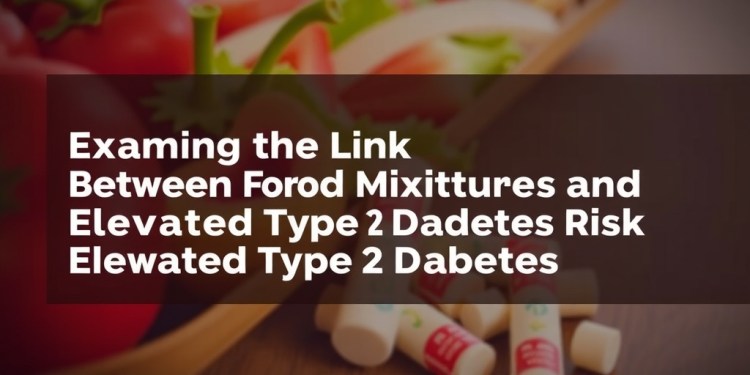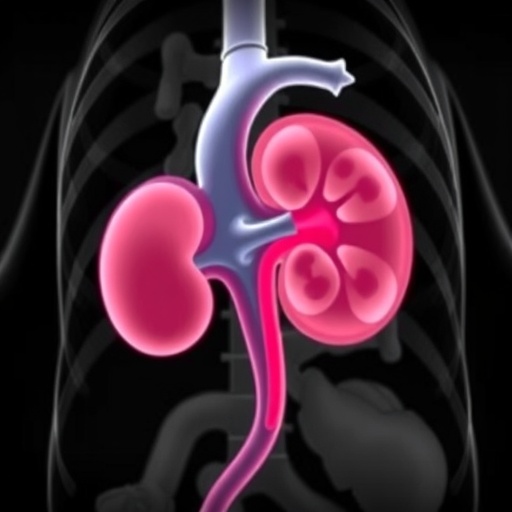
In a groundbreaking study presented by a collaborative team of researchers from Inserm, INRAE, and several prestigious universities, the safety of food additives has been called into question, particularly regarding their combined consumption and potential health implications. This robust research utilized extensive data from the French NutriNet-Santé cohort, which examined over 108,000 adults and their dietary habits over an average follow-up period of 7.7 years. The outcomes of this study challenge our common understanding of food additive safety, revealing alarming correlations between specific mixtures of these substances and the incidence of type 2 diabetes.
Food additives are prevalent in ultra-processed foods, which constitute a significant portion of the modern diet. Historically, assessments of these additives’ safety were conducted on a singular basis. However, the novel approach taken by researchers in this study focuses on the interaction effects of multiple additives consumed together—a critical oversight in previous evaluations. The team’s methodology involved identifying and modeling mixtures that are frequently ingested together, employing dietary records to ensure that only those additives consumed by at least 5% of the cohort were analyzed.
The study revealed two distinct mixtures associated with an elevated risk of type 2 diabetes, despite controlling for various lifestyle factors and overall dietary quality. One of these mixtures is predominantly composed of emulsifiers like modified starches and carrageenans, along with a preservative and a coloring agent. Foods frequently containing this blend include popular items such as sauces, desserts, and stocks. The second mixture primarily encompasses additives found in artificially-sweetened beverages, harboring a combination of acidity regulators, sweeteners, and colorants that are characteristic of soda and diet drinks.
These findings are particularly concerning given the ubiquitous nature of these additives in our food supply. As obesity and type 2 diabetes reach epidemic levels globally, understanding the contributory factors becomes increasingly critical. The association of these additive mixtures with diabetes underscores the need for altered regulatory frameworks regarding food safety assessments. The study’s lead researcher, Mathilde Touvier, emphasized the implication of these findings, suggesting that frequent consumption of these mixtures may act as a modifiable risk factor for type 2 diabetes.
The implications of these interactions, termed “cocktail effects,” could offer new pathways for research into public health initiatives aimed at reducing diabetes prevalence. Both synergistic and antagonistic interactions were identified, indicating a complex web of dependencies among these additives that deserve further investigation. This complexity illuminates why previous evaluations have failed to adequately assess the potential risks posed by additives consumed in tandem.
In addition to diabetes, prior studies have linked these food additives to a host of other health concerns including metabolic disorders and cardiovascular diseases. The NutriNet-Santé cohort continues to provide invaluable insights into the intricate relationship between dietary patterns and chronic health conditions, underlining the importance of sustained research efforts in this area. The cohort’s commitment to engaging participants in ongoing dietary evaluations highlights a collaborative effort towards enhancing public health through informed dietary choices.
Despite the compelling nature of these findings, researchers caution against assuming definitive causal relationships based solely on observational data. Additional studies are imperative to clarify the mechanisms behind these associations and to determine the true impact of food additive mixtures on human health. Future work must delve deeper into understanding how various factors, including an individual’s unique biochemistry and the cumulative nature of dietary exposure, interact with food additives.
As consumers grow more health-conscious and informed, the food industry faces mounting pressure to reconsider how these additives are utilized in food production. Regulatory agencies may be prompted to reevaluate safety assessments, taking into account the new evidence on additive interactions. This could potentially lead to stricter guidelines on what is deemed acceptable in food products and foster innovation in creating healthier alternatives.
This evolving science highlights the dynamic interface between nutrition, public health, and regulatory policy, emphasizing how emerging data can shape consumer choices, industry practices, and ultimately health outcomes. With these recent findings, there is a renewed urgency for stakeholders across the spectrum—scientists, policymakers, and consumers—to engage in critical discussions surrounding food additives, their risks, and a collective pathway towards improving dietary health.
In summary, the new insights gained from this substantial research challenge the conventional siloed evaluation of food additives, advocating for a comprehensive understanding that accounts for their interactions. As we advance our understanding, the significance of ensuring food safety remains paramount, with potential repercussions that extend beyond individual health into broader societal implications.
As public awareness continues to rise, informed consumerism may push for greater transparency within the food industry, compelling manufacturers to reconsider additive compositions and prioritize consumer health. The growing corpus of research on food additive mixtures undoubtedly opens intriguing avenues for future inquiry into the multifaceted relationship between diet and disease, and reinforces the importance of ongoing vigilance in the pursuit of healthier living.
Ultimately, this study illustrates the critical need for a paradigm shift in how we assess the safety of food additives, paving the way for new strategies that could significantly impact public health and diabetes prevention.
Subject of Research: The relationship between food additive mixtures and type 2 diabetes incidence.
Article Title: Food additive mixtures and type 2 diabetes incidence: Results from the NutriNet-Santé prospective cohort.
News Publication Date: April 8, 2025.
Web References: NutriNet-Santé Study
References:
Cynthia Recoules, Mathilde Touvier, Fabrice Pierre, Marc Audebert. Food Chem Toxicol. 2025 Feb:196:115198. doi: 10.1016/j.fct.2024.115198. Epub 2024 Dec 14.
Image Credits: PLOS Medicine
Keywords: Type 2 diabetes, Food safety, Public health, Additive effects, Cohort studies.
Tags: combined effects of food additivesdietary habits and health outcomeselevated diabetes risk from food mixturesfood additive safety assessmentfood additives and type 2 diabetesFrench NutriNet-Santé cohort studyhealth implications of food additivesinteraction effects of food additivesmodern diet and health riskspublic health and nutrition researchresearch on food additivesultra-processed foods and diabetes risk





